Ecosystem Service Supply and Capacity on U.S. Family Forestlands
Abstract
:1. Introduction
2. Materials and Methods
3. Results and Discussion
3.1. Excludable Benefits
3.2. Non-Excludable Benefits
3.3. Ecosystem Service Capacity
4. Conclusions
Acknowledgments
Author Contributions
Conflicts of Interest
References
- Butler, B.J.; Hewes, J.H.; Dickinson, B.J.; Andrejczyk, K.; Butler, S.M.; Markowski-Lindsay, M. USDA Forest Service National Woodland Owner Survey: National, Regional, and State Statistics for Family Forest and Woodland Ownerships with 10+ Acres, 2011–2013, Res. Bull. NRS-99; U.S. Department of Agriculture, Forest Service, Northern Research Station: Newtown Square, PA, USA, 2016.
- Butler, B.J.; Hewes, J.H.; Dickinson, B.J.; Andrejczyk, K.; Butler, S.M.; Markowski-Lindsay, M. Family forest ownerships of the United States, 2013: Findings from the U.S. Forest Service’s National Woodland Owner Survey. J. For. 2016, 114, 638–647. [Google Scholar] [CrossRef]
- Fisher, B.; Turner, R.K.; Morling, P. Defining and classifying ecosystem services for decision making. Ecol. Econ. 2009, 68, 643–653. [Google Scholar] [CrossRef]
- Boyd, J.; Banzhaf, S. What are ecosystem services? The need for standardized environmental accounting units. Ecol. Econ. 2007, 63, 616–626. [Google Scholar] [CrossRef]
- Costanza, R.; de Groot, R.; Sutton, P.; van der Ploeg, S.; Anderson, S.J.; Kubiszewski, I.; Farber, S.; Turner, R.K. Changes in the global value of ecosystem services. Glob. Environ. Chang. 2014, 26, 152–158. [Google Scholar] [CrossRef]
- Costanza, R. Ecosystem services: Multiple classification systems are needed. Biol. Conserv. 2008, 141, 350–352. [Google Scholar] [CrossRef]
- Millenium Ecosystem Assessment. Ecosystems and Human Well-Being: Synthesis; Island Press: Washington, DC, USA, 2005. [Google Scholar]
- Díaz, S.; Quétier, F.; Cáceres, D.M.; Trainor, S.F.; Pérez-Harguindeguy, N.; Bret-Harte, M.S.; Finegan, B.; Peña-Claros, M.; Poorter, L. Linking functional diversity and social actor strategies in a framework for interdisciplinary analysis of nature’s benefits to society. Proc. Natl. Acad. Sci. USA 2011, 108, 895–902. [Google Scholar] [CrossRef] [PubMed]
- Farber, S.C.; Costanza, R.; Wilson, M.A. Economic and ecological concepts for valuing ecosystem services. Ecol. Econ. 2002, 41, 375–392. [Google Scholar] [CrossRef]
- Bagstad, K.J.; Villa, F.; Batker, D.; Harrison-Cox, J.; Voigt, B.; Johnson, G.W. From theoretical to actual ecosystem services: Mapping beneficiaries and spatial flows in ecosystem service assessments. Ecol. Soc. 2014, 19, 64. [Google Scholar] [CrossRef]
- López-Hoffman, L.; Wiederholt, R.; Sansone, C.; Bagstad, K.J.; Cryan, P.; Diffendorfer, J.E.; Goldstein, J.; LaSharr, K.; Loomis, J.; McCracken, G.; et al. Market forces and technological substitutes cause fluctuations in the value of bat pest-control services for cotton. PLoS ONE 2014, 9, e87912. [Google Scholar] [CrossRef] [PubMed]
- Caputo, J.; Beier, C.M.; Luzadis, V.A.; Groffman, P.M. Integrating beneficiaries into assessment of ecosystem services from managed forests at the Hubbard Brook Experimental Forest, USA. For. Ecosyst. 2016, 3, 15. [Google Scholar] [CrossRef]
- Felipe-Lucia, M.R.; Martín-López, B.; Lavorel, S.; Berraquero-Díaz, L.; Escalera-Reyes, J.; Comín, F.A. Ecosystem services flows: Why stakeholders’ power relationships matter. PLoS ONE 2015, 10, 21. [Google Scholar] [CrossRef] [PubMed]
- Bechtold, W.A.; Patterson, P.L. The Enhanced Forest Inventory and Analysis Program—National Sampling Design and Estimation Procedures, GTR SRS-80; U.S. Department of Agriculture, Forest Service, Southern Research Station: Asheville, NC, USA, 2005.
- Butler, B.J.; Dickinson, B.J.; Hewes, J.H.; Butler, S.M.; Andrejczyk, K.; Markowski-Lindsay, M. USDA Forest Service, National Woodland Owner Survey 2011–2013: Design, Implementation, and Estimation Methods, GTR NRS-157; U.S. Department of Agriculture, Forest Service, Northern Research Station: Newtown Square, PA, USA, 2016.
- Daniel, T.C.; Muhar, A.; Arnberger, A.; Aznar, O.; Boyd, J.W.; Chan, K.M.A.; Costanza, R.; Elmqvist, T.; Flint, C.G.; Gobster, P.H.; et al. Contributions of cultural services to the ecosystem services agenda. Proc. Natl. Acad. Sci. USA 2012, 109, 8812–8819. [Google Scholar] [CrossRef] [PubMed]
- Blicharska, M.; Smithers, R.J.; Hedblom, M.; Hedenås, H.; Mikusiński, G.; Pedersen, E.; Sandström, P.; Svensson, J. Shades of grey challenge practical application of the cultural ecosystem services concept. Ecosyst. Serv. 2017, 23, 55–70. [Google Scholar] [CrossRef]
- Milcu, A.I.; Hanspach, J.; Abson, D.; Fischer, J. Cultural ecosystem services: A literature review and prospects for future research. Ecol. Soc. 2013, 18, 44. [Google Scholar] [CrossRef]
- Hendee, J.T.; Flint, C.G. Incorporating cultural ecosystem services into forest management strategies for private landowners: An Illinois case study. For. Sci. 2014, 60, 1172–1179. [Google Scholar] [CrossRef]
- Collier, M.J. Novel ecosystems and the emergence of cultural ecosystem services. Ecosyst. Serv. 2014, 9, 166–169. [Google Scholar] [CrossRef]
- Allan, J.D.; Smith, S.D.P.; McIntyre, P.B.; Joseph, C.A.; Dickinson, C.E.; Marino, A.L.; Biel, R.G.; Olson, J.C.; Doran, P.J.; Rutherford, E.S.; et al. Using cultural ecosystem services to inform restoration priorities in the Laurentian Great Lakes. Front. Ecol. Environ. 2015, 13, 418–424. [Google Scholar] [CrossRef]
- Blumstein, M.; Thompson, J.R. Land-use impacts on the quantity and configuration of ecosystem service provisioning in Massachusetts, USA. J. Appl. Ecol. 2015, 52, 1009–1019. [Google Scholar] [CrossRef]
- Oswalt, S.N.; Smith, W.B.; Miles, P.D.; Pugh, S.A. Forest Resources of the United States, 2012: A Technical Document Supporting the Forest Service update of the 2010 RPA Assessment, GTR WO-91; U.S. Department of Agriculture, Forest Service: Washington, DC, USA, 2014.
- Caputo, J.; Beier, C.M.; Groffman, P.M.; Burns, D.A.; Beall, F.D.; Hazlett, P.W.; Yorks, T.E. Effects of Harvesting Forest Biomass on Water and Climate Regulation Services: A Synthesis of Long-Term Ecosystem Experiments in Eastern North America. Ecosystems 2016, 19, 271–283. [Google Scholar] [CrossRef]
- Pagiola, S.; Bishop, J.; Landell-Mills, N. Selling Forest Environmental Services: Market-Based Mechanisms for Conservation and Development; Earthscan Publications: London, UK, 2002. [Google Scholar]
- Silver, E.J.; Leahy, J.E.; Weiskittel, A.R.; Noblet, C.L.; Kittredge, D.B. An evidence-based review of timber harvesting behavior among private woodland owners. J. For. 2015, 113, 490–499. [Google Scholar] [CrossRef]
- Gomez, J.; Vidon, P.; Gross, J.; Beier, C.; Caputo, J.; Mitchell, M. Estimating greenhouse gas emissions at the soil–atmosphere interface in forested watersheds of the US Northeast. Environ. Monit. Assess. 2016, 188, 16. [Google Scholar] [CrossRef] [PubMed]
- Lippke, B.; Oneil, E.; Harrison, R.; Skog, K.; Gustavsson, L.; Sathre, R. Life cycle impacts of forest management and wood utilization on carbon mitigation: Knowns and unknowns. Carbon Manag. 2011, 2, 303–333. [Google Scholar] [CrossRef]
- Caputo, J. Commoditization and the Origins of American Silviculture. Bull. Sci. Technol. Soc. 2012, 32, 86–95. [Google Scholar] [CrossRef]
- Ricketts, T.H.; Regetz, J.; Steffan-Dewenter, I.; Cunningham, S.A.; Kremen, C.; Bogdanski, A.; Gemmill-Herren, B.; Greenleaf, S.S.; Klein, A.M.; Mayfield, M.M.; et al. Landscape effects on crop pollination services: Are there general patterns? Ecol. Lett. 2008, 11, 499–515. [Google Scholar] [CrossRef] [PubMed]
- Nayak, G.K.; Roberts, S.P.M.; Garratt, M.; Breeze, T.D.; Tscheulin, T.; Harrison-Cripps, J.; Vogiatzakis, I.N.; Stirpe, M.T.; Potts, S.G. Interactive effect of floral abundance and semi-natural habitats on pollinators in field beans (Vicia faba). Agric. Ecosyst. Environ. 2015, 199, 58–66. [Google Scholar] [CrossRef]
- Martins, K.T.; Gonzalez, A.; Lechowicz, M.J. Pollination services are mediated by bee functional diversity and landscape context. Agric. Ecosyst. Environ. 2015, 200, 12–20. [Google Scholar] [CrossRef]
- Burton, R.J.F. Seeing through the ‘good farmer’s’ eyes: Towards developing an understanding of the social symbolic value of ‘productivist’ behaviour. Sociol. Rural. 2004, 44, 195–215. [Google Scholar] [CrossRef]
- Kreye, M.M.; Pienaar, E.F.; Adams, A.E. The Role of Community Identity in Cattlemen Response to Florida Panther Recovery Efforts. Soc. Nat. Resour. 2017, 30, 79–94. [Google Scholar] [CrossRef]
- Asah, S.T.; Blahna, D.J.; Ryan, C.M. Involving forest communities in identifying and constructing ecosystem services: Millennium assessment and place specificity. J. For. 2012, 110, 149–156. [Google Scholar] [CrossRef]
- Cardinale, B.J.; Duffy, J.E.; Gonzalez, A.; Hooper, D.U.; Perrings, C.; Venail, P.; Narwani, A.; Mace, G.M.; Tilman, D.; Wardle, D.A.; et al. Biodiversity loss and its impact on humanity. Nature 2012, 486, 59–67. [Google Scholar] [CrossRef] [PubMed]
- Harrison, P.A.; Berry, P.M.; Simpson, G.; Haslett, J.R.; Blicharska, M.; Bucur, M.; Dunford, R.; Egoh, B.; Garcia-Llorente, M.; Geamănă, N.; et al. Linkages between biodiversity attributes and ecosystem services: A systematic review. Ecosyst. Serv. 2014, 9, 191–203. [Google Scholar] [CrossRef]
- Bennett, E.M.; Peterson, G.D.; Gordon, L.J. Understanding relationships among multiple ecosystem services. Ecol. Lett. 2009, 12, 1394–1404. [Google Scholar] [CrossRef] [PubMed]
- Mika, A.M.; Keeton, W.S. Factors contributing to carbon fluxes from bioenergy harvests in the U.S. Northeast: An analysis using field data. GCB Bioenergy 2013, 5, 290–305. [Google Scholar] [CrossRef]
- Walker, T.; Cardellichio, P.; Gunn, J.S.; Saah, D.S.; Hagan, J.M. Carbon accounting for woody biomass from Massachusetts (USA) managed forests: A framework for determining the temporal impacts of wood biomass energy on atmospheric greenhouse gas levels. J. Sustain. For. 2013, 32, 130–158. [Google Scholar] [CrossRef]
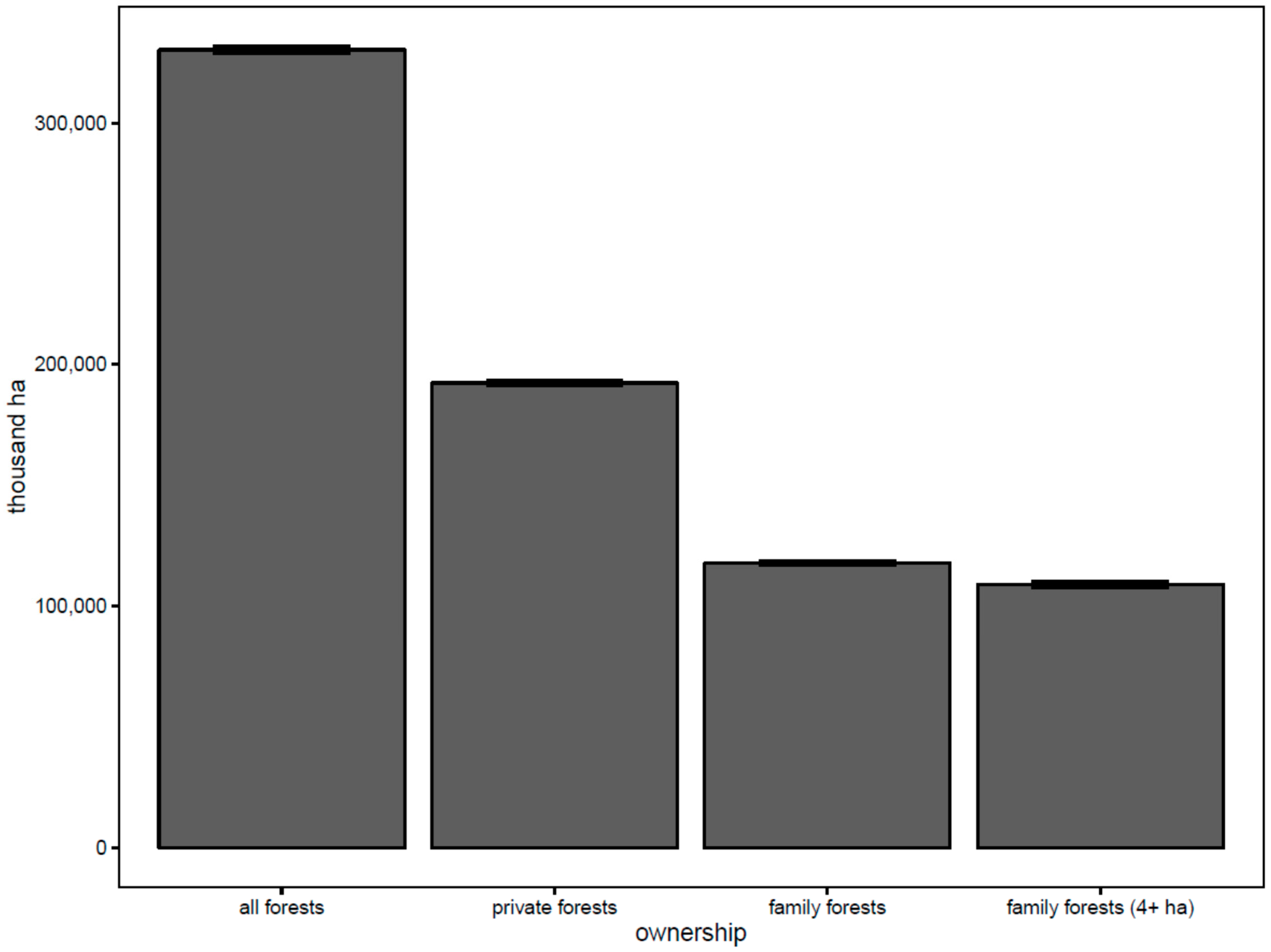
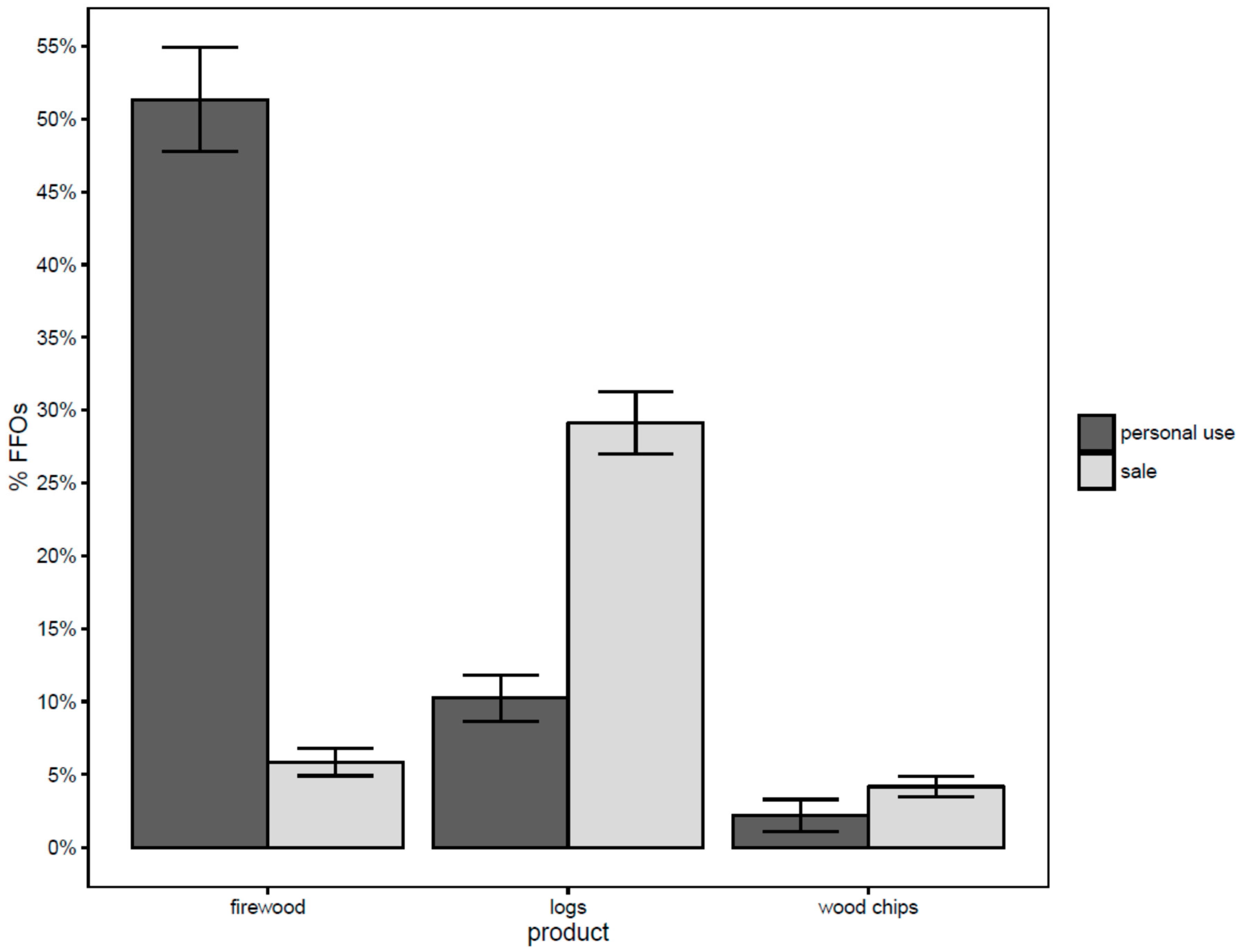
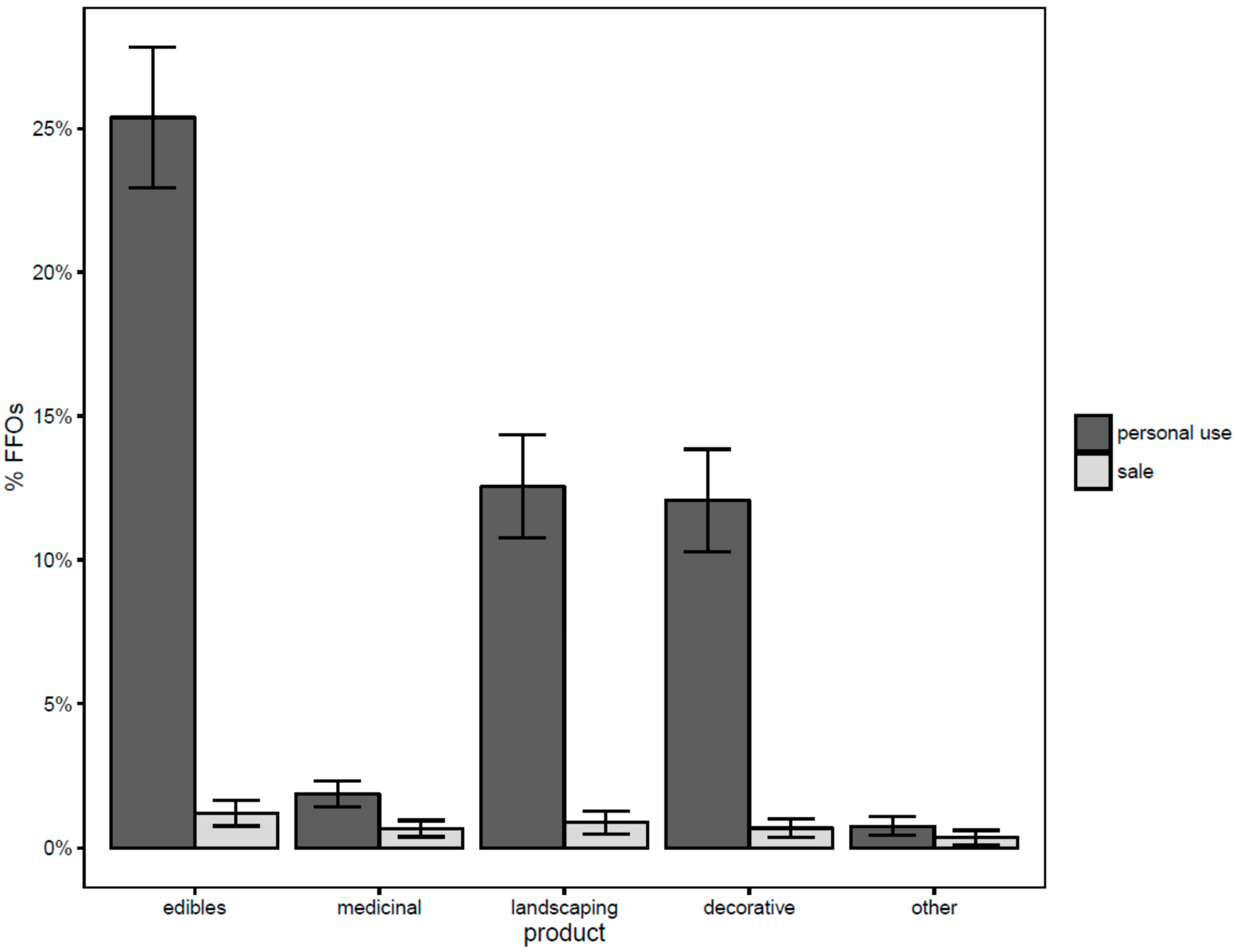
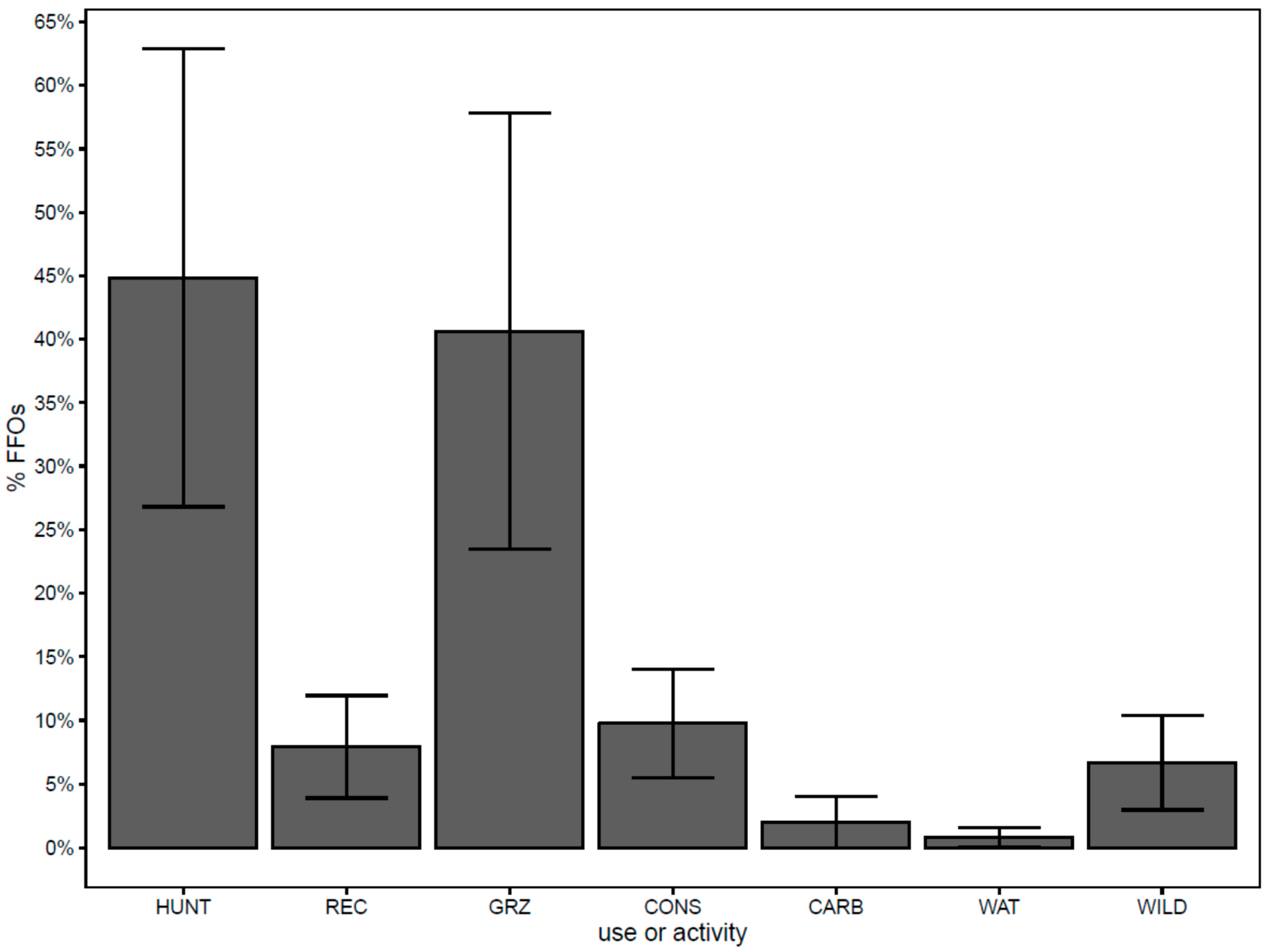
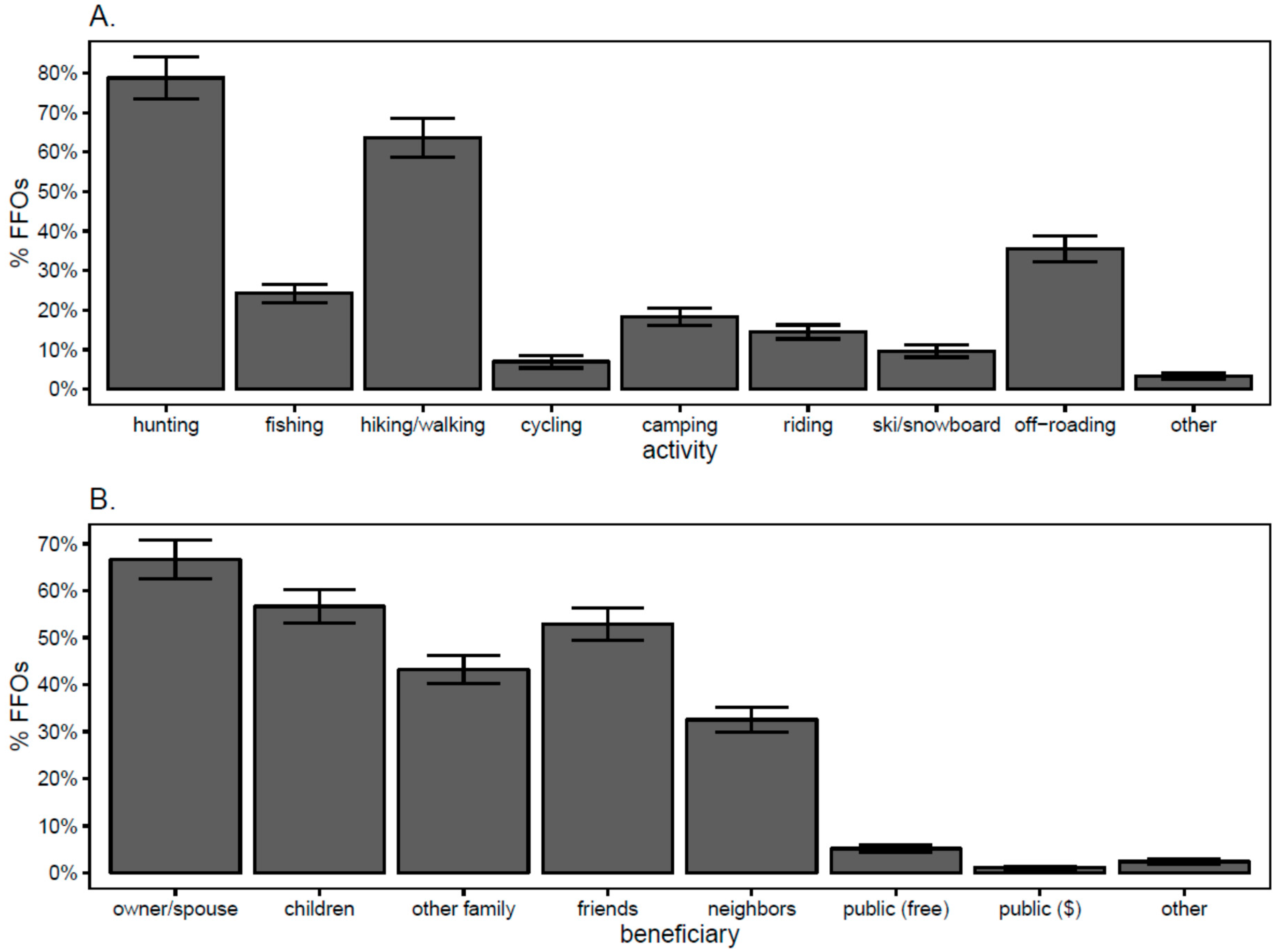
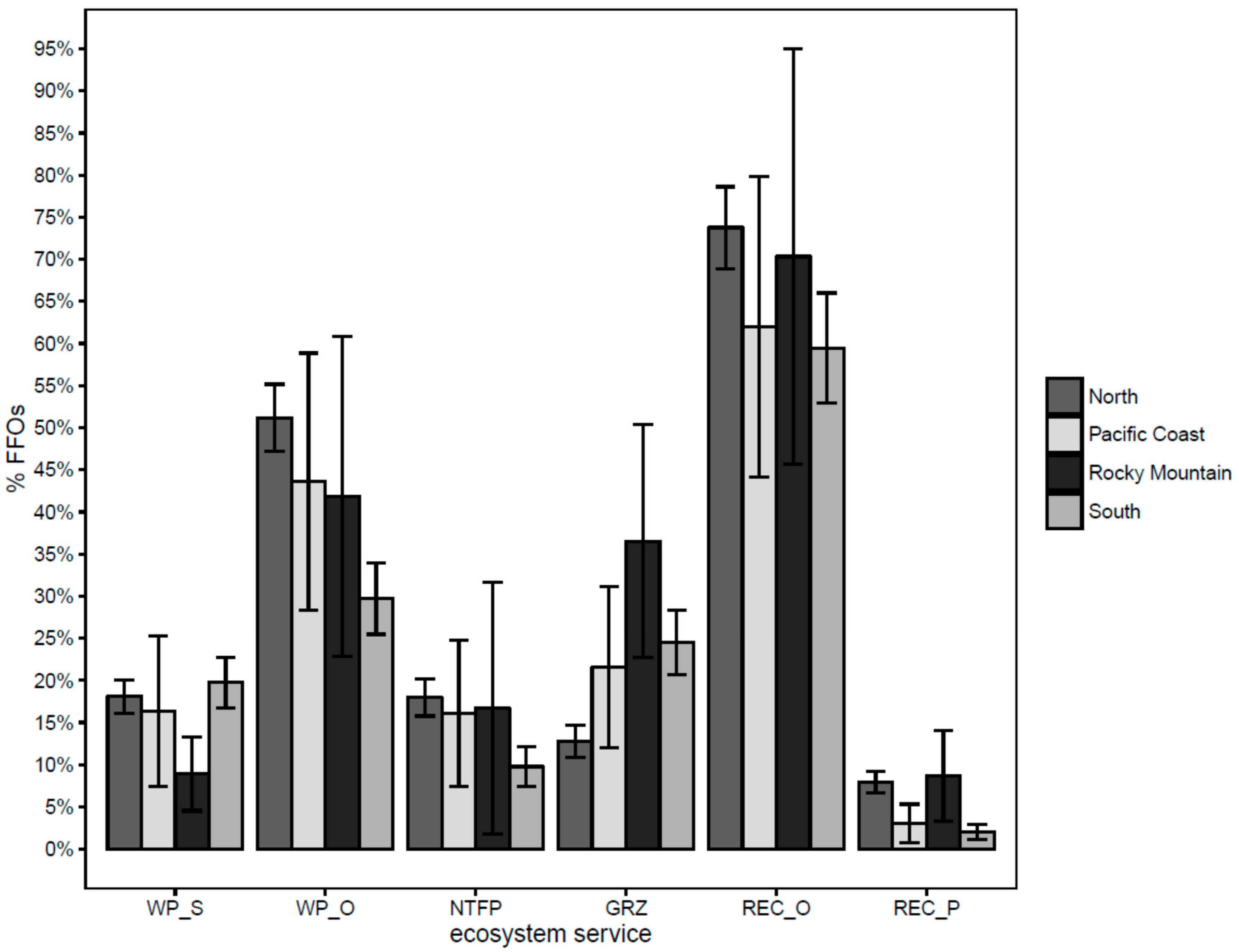
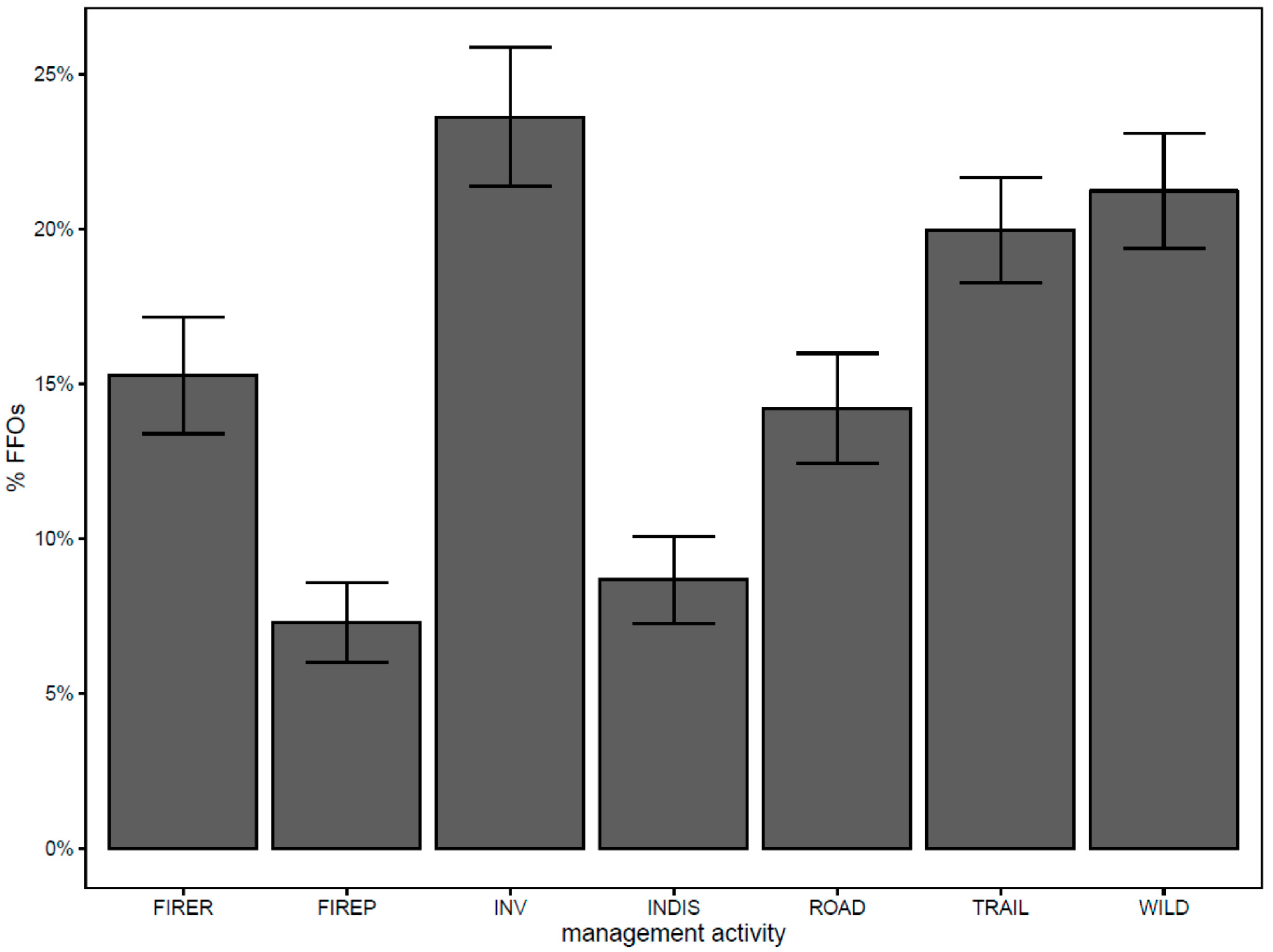
© 2017 by the authors. Licensee MDPI, Basel, Switzerland. This article is an open access article distributed under the terms and conditions of the Creative Commons Attribution (CC BY) license (http://creativecommons.org/licenses/by/4.0/).
Share and Cite
Caputo, J.; Butler, B. Ecosystem Service Supply and Capacity on U.S. Family Forestlands. Forests 2017, 8, 395. https://doi.org/10.3390/f8100395
Caputo J, Butler B. Ecosystem Service Supply and Capacity on U.S. Family Forestlands. Forests. 2017; 8(10):395. https://doi.org/10.3390/f8100395
Chicago/Turabian StyleCaputo, Jesse, and Brett Butler. 2017. "Ecosystem Service Supply and Capacity on U.S. Family Forestlands" Forests 8, no. 10: 395. https://doi.org/10.3390/f8100395




